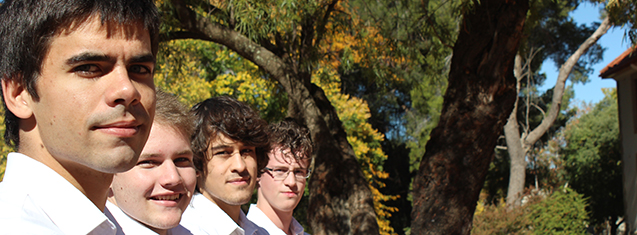
Photo: Mark Steenbok (Bloemfontein Courant)
Christiaan Paulsen (team leader), Sias Conradie, Jannie de Wet and Frikkie Jacobs.
Four Kovsies in the Department of Mathematical Statistics and Actuarial Sciences are one of the top four teams in the Chartered Institute of Management Accountants’ (CIMA) Global Business Challenge. 178 teams registered to participate in the competition.
Team Bernoulli from the UFS will compete against two teams: one from the University of Pretoria and one from the Chartered Accountant Training Institute in Sandton. The winning team will win a trip to Poland, Europe to represent their university and country at the 2015 global final.
This international business competition is for undergraduates around the world, designed to bring out the best in the young business leaders of tomorrow.
Team leader, Christiaan Paulsen, said: “We are overjoyed to be in the final. However, our true success is in what we learned along the way”.
The team has to present a business case study, showcasing their talent in business management. During this competition, the team has
- learned to analyse and solve a real-life business case study;
- -obtained first-hand experience of the skills required to be a business leader;
- enhanced their team building skills; and
- developed their presentation skills.
Students from Australia, Bangladesh, China, Ghana, Hong Kong SAR, India, Indonesia, Ireland, GCC, Malaysia, Myanmar, Nepal, New Zealand, Nigeria, Pakistan, Phillipines, Poland, Russia, Singapore, South Africa, Sri Lanka, Thailand, Ukraine, United Kingdom, Vietnam, and Zambia are taking part in the competition.
This competition is organised by CIMA in conjunction with Barclays.